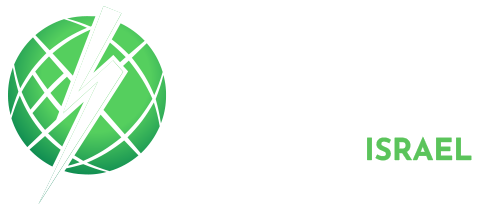C4.
Mission
To facilitate and promote the progress of engineering and international exchange of information and knowledge in the field of technical performance of end-to-end power systems. To add value to this information and knowledge through synthesis of advanced practices and development of recommendations supporting the energy transition.
Scope
Study Committee C4 is responsible for advanced analysis methods and tools related to end-to-end power systems, with special attention to dynamic and transient conditions and the interaction between the power system and its mechanisms/subsystems (including external voltage factors, other installations, and non-standard waveforms). This scope includes development of tools, models, and analysis methods to identify power system needs, deficiencies, technical envelope and design requirements, and new power system phenomena caused or accelerated by the energy transition. Key drivers, from the system perspective, include increased penetration of non-synchronous generation technologies such as wind, solar, and storage into the power system, and the resulting changes in transmission and distribution networks. Accurate models of controls for new technologies (IBR-based) have become increasingly important for power system studies in both steady-state and transients, as well as in inter-harmonic and harmonic issues. The Study Committee also addresses modeling and performance issues related to demand, particularly integration in distributed power systems. Types of demand considered include, among others, traditional industrial plants (such as arc furnaces, traction systems, etc.) and their decarbonization efforts, and new energy consumers (such as data centers, electrolyzers, crypto mining farms).
Specific topics related to the design and production of components and instrumentation are not within SC C4's scope, nor are those specifically related to design, operation and control, except in cases where a component, device or subsystem depends on, or maintains significant interaction with the performance of the adjacent power system. However, since many design studies rely on tools used and developed within SC C4, it is important to note that SC C4 supports and encourages joint work with other study committees and external stakeholders.

The scope of SC C4 covers power system technical performance phenomena ranging from nanoseconds to many hours. Areas of attention include:
Power System Dynamics: Development of processes and recommended practices for performing power system dynamic studies, particularly for grid connection studies. Development of advanced tools, models, and new analytical techniques for evaluating traditional and emerging new forms of power system dynamic/transient performance, security, and stability. Control design, modeling of existing and new equipment, real-time stability assessment and control. Modeling of transient and asymmetrical conditions of power systems. Black-start analysis using IBR. Keywords: steady-state, power system dynamics, RMS, EMT, PDT, voltage stability, frequency stability, transient stability, rotor angle stability, resonance stability, converter-driven stability, control interactions, small-signal stability, sub-synchronous oscillations, super-synchronous oscillations, low inertia, RoCoF, grid following, grid forming, IBR, IBL, storage, wind and solar, SPS, system strength, PMU, model development, model validation, power system resilience.
Power Quality: End-to-end power supply continuity and voltage waveform quality (magnitude, frequency, symmetry). The analysis covers emission assessments from contributing facilities (e.g., HVDC, FACTS controllers, inverter-based resources, inverter-based loads, arc furnaces) in radial and meshed networks, measurement and simulation methods, quality indices identification, monitoring techniques, immunity of sensitive installations, and mitigation techniques considering a coordinated approach across all voltage levels. Keywords: power quality, voltage fluctuations, voltage dips, flicker, voltage unbalance, frequency variation, waveform distortion, harmonics, sub-harmonics, inter-harmonics, emissions, PQ compatibility, PQ monitoring, PQ mitigation.
Electromagnetic Compatibility and Interference (EMC/EMI): High-frequency disturbances in end-to-end power supply and all disturbances (HF or LF) reaching equipment not through power supply. Studies include measurement and simulation methods including EM susceptibility, immunity of sensitive installations, EMC near power systems, effects of intentional EMI and HEMP on power system, understanding geomagnetic phenomena and their effects on power system. SC C4 will support assessment of health effects related to low-frequency EMF through measurements, calculations, mitigation, etc. Keywords: EMC, EMI, HEMP, GMD, super-harmonic, radiated disturbances, conducted disturbances, radio interference, communication interference, impulsive transient, oscillatory transient, digitalization.
Lightning: Analysis and modeling of lightning characteristics and lightning interactions with power systems and electrical equipment, including assessment of lightning protection performance of power systems and lightning detection technologies. Design of protection measures against lightning effects and their standardization in electricity transmission and distribution networks, power stations, sensitive infrastructure, industrial sites, and tall buildings. Keywords: Back-Flashover, EMT analysis, FDTD, Ground Flash Density, grounding, induced overvoltage, lightning, lightning characteristics, lightning data analysis, lightning detection systems, lightning-caused overvoltages, lightning measurements, lightning monitoring, lightning performance, lightning protection, shield wire, surge arresters.
Insulation Coordination: Methods and tools for insulation coordination and electromagnetic transient analysis (e.g., harmonic instability, ferroresonance, lightning, switching, transformer energization, IBR-driven transients) in power systems and electrical equipment, contributing to the optimization of their cost and reliability. Development of accurate models for network components and equipment, suitable for the phenomena of interest, as well as modern sources for LF, HF, and VHF transients. Keywords: insulation coordination, BIL, BSL, low-frequency oscillation, temporary overvoltage, slow front surges, fast front surges, very fast front surges, harmonic instability, ferroresonance, resonance, inrush current, transformer energization, EMT, switching transient, black start.
צרו קשר
אנחנו מזמינים אותך
להצטרף לשורות ארגון CIGRE הבינלאומי


